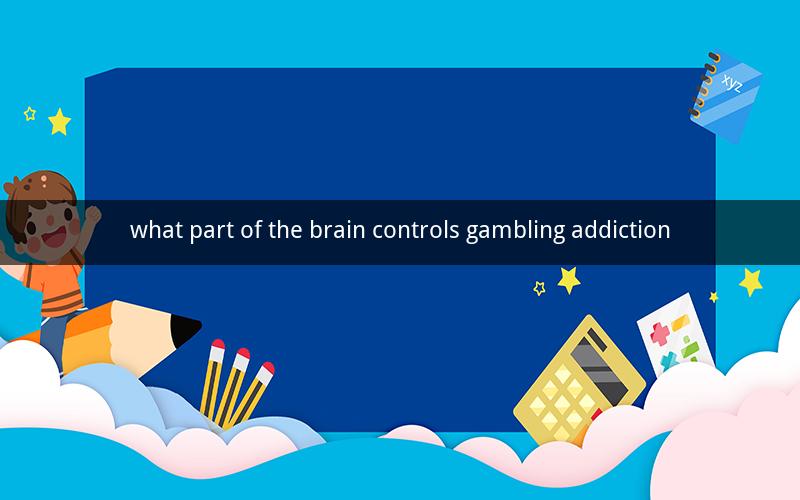
Table of Contents
1. Introduction
2. Understanding the Brain's Structure
3. The Role of Dopamine
4. The Prefrontal Cortex and Decision Making
5. The Nucleus Accumbens and Reward System
6. The Limbic System and Emotional Responses
7. The Striatum and Habit Formation
8. The Prefrontal Cortex and Reward Deficiency Syndrome
9. Neuroplasticity and Recovery
10. Conclusion
1. Introduction
Gambling addiction, a form of compulsive behavior, has been extensively studied in the field of neuroscience. Understanding the brain's role in controlling gambling addiction is crucial for developing effective treatments and interventions. This article aims to explore the various brain regions involved in regulating gambling addiction and their respective functions.
2. Understanding the Brain's Structure
The human brain is a complex organ composed of several interconnected regions. Each region plays a unique role in regulating various functions. To understand gambling addiction, it is essential to have a basic understanding of the brain's structure.
3. The Role of Dopamine
Dopamine, a neurotransmitter, plays a crucial role in regulating pleasure and reward. When a person engages in gambling, the brain releases dopamine, which creates a sense of euphoria and pleasure. This dopamine release reinforces the behavior, leading to a potential addiction.
4. The Prefrontal Cortex and Decision Making
The prefrontal cortex is responsible for decision-making, planning, and self-control. This region plays a crucial role in regulating addictive behaviors. Individuals with gambling addiction often show deficits in the prefrontal cortex, making it challenging for them to resist the urge to gamble.
5. The Nucleus Accumbens and Reward System
The nucleus accumbens, located in the brain's reward system, plays a vital role in processing pleasure and reinforcing behaviors. When a person engages in gambling, the nucleus accumbens becomes highly activated, leading to the release of dopamine. This reinforces the gambling behavior and can contribute to addiction.
6. The Limbic System and Emotional Responses
The limbic system is involved in regulating emotions and emotional responses. This system interacts with the reward system, making individuals more susceptible to addiction. Emotions such as fear, anxiety, and excitement can trigger gambling behaviors in susceptible individuals.
7. The Striatum and Habit Formation
The striatum, a region within the basal ganglia, is responsible for habit formation and reinforcement learning. In gambling addiction, the striatum becomes hyperactive, leading to the formation of habits that drive compulsive gambling behaviors.
8. The Prefrontal Cortex and Reward Deficiency Syndrome
Reward deficiency syndrome (RDS) is a proposed theory that explains the neurobiological basis of addiction. RDS suggests that individuals with gambling addiction may have a deficiency in the prefrontal cortex, leading to a reduced sensitivity to rewards and an increased risk of addiction.
9. Neuroplasticity and Recovery
Neuroplasticity refers to the brain's ability to change and adapt throughout life. This characteristic allows individuals with gambling addiction to recover and develop healthier behaviors. By engaging in therapy and rehabilitation, individuals can rewire their brain's pathways, reducing the risk of relapse.
10. Conclusion
Gambling addiction is a complex disorder with various neurobiological underpinnings. Understanding the brain regions involved in controlling gambling addiction, such as the prefrontal cortex, nucleus accumbens, and limbic system, is crucial for developing effective treatments. By targeting these brain regions, therapists and researchers can help individuals with gambling addiction break free from their compulsive behaviors and achieve recovery.
Additional Questions and Answers:
1. What is the role of dopamine in gambling addiction?
Dopamine is a neurotransmitter that plays a crucial role in regulating pleasure and reward. In gambling addiction, the release of dopamine reinforces the behavior, leading to a potential addiction.
2. How does the prefrontal cortex contribute to gambling addiction?
The prefrontal cortex is responsible for decision-making and self-control. Deficits in this region can make it challenging for individuals with gambling addiction to resist the urge to gamble.
3. What is the nucleus accumbens' role in gambling addiction?
The nucleus accumbens is involved in processing pleasure and reinforcing behaviors. Its hyperactivity in gambling addiction can lead to the formation of habits that drive compulsive gambling.
4. How does the limbic system contribute to gambling addiction?
The limbic system regulates emotions and emotional responses. It interacts with the reward system, making individuals more susceptible to addiction and triggering gambling behaviors.
5. What is the function of the striatum in gambling addiction?
The striatum is responsible for habit formation and reinforcement learning. In gambling addiction, it becomes hyperactive, leading to the formation of habits that drive compulsive gambling.
6. How does reward deficiency syndrome relate to gambling addiction?
Reward deficiency syndrome suggests that individuals with gambling addiction may have a deficiency in the prefrontal cortex, leading to reduced sensitivity to rewards and an increased risk of addiction.
7. What is neuroplasticity and how does it relate to recovery from gambling addiction?
Neuroplasticity refers to the brain's ability to change and adapt. By engaging in therapy and rehabilitation, individuals with gambling addiction can rewire their brain's pathways, reducing the risk of relapse.
8. Can brain imaging techniques help in diagnosing gambling addiction?
Yes, brain imaging techniques, such as functional magnetic resonance imaging (fMRI), can help diagnose gambling addiction by identifying abnormal brain activity in specific regions.
9. What are some common treatments for gambling addiction?
Common treatments for gambling addiction include cognitive-behavioral therapy (CBT), contingency management, and support groups. These interventions help individuals develop healthier behaviors and cope with addiction.
10. How can family and friends support individuals with gambling addiction?
Family and friends can support individuals with gambling addiction by offering empathy, encouragement, and practical assistance. They can also help the individual seek professional help and provide a supportive environment during recovery.